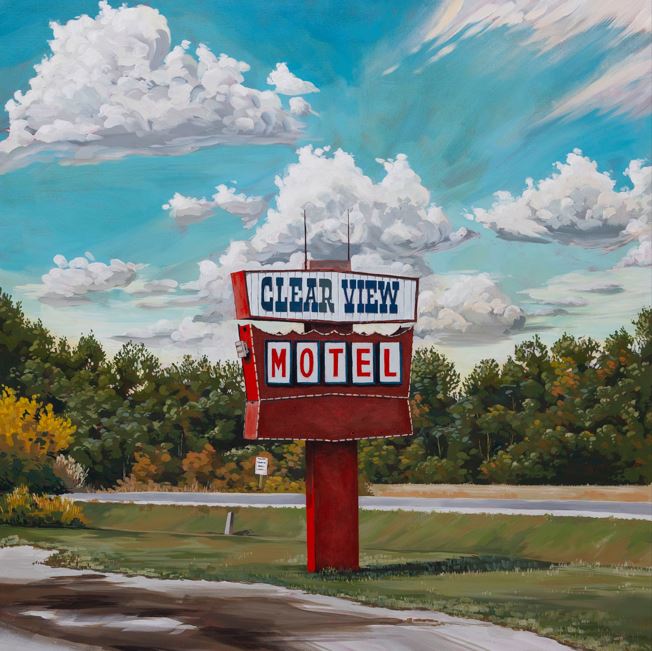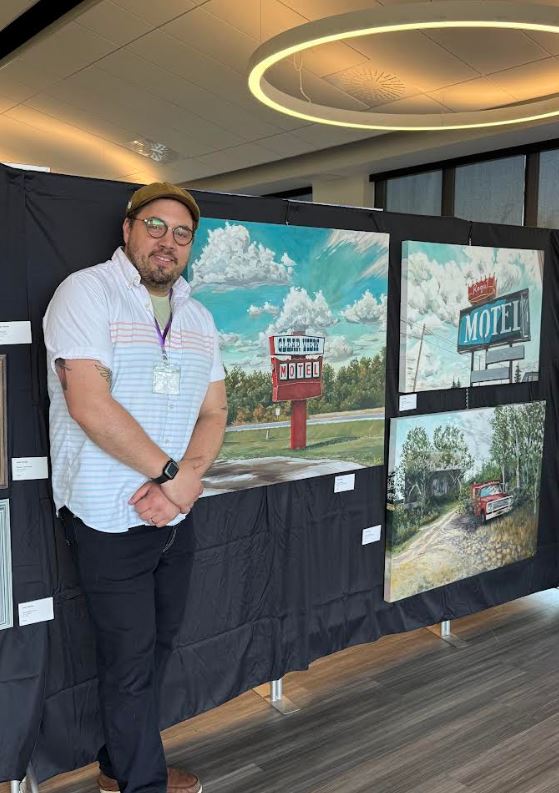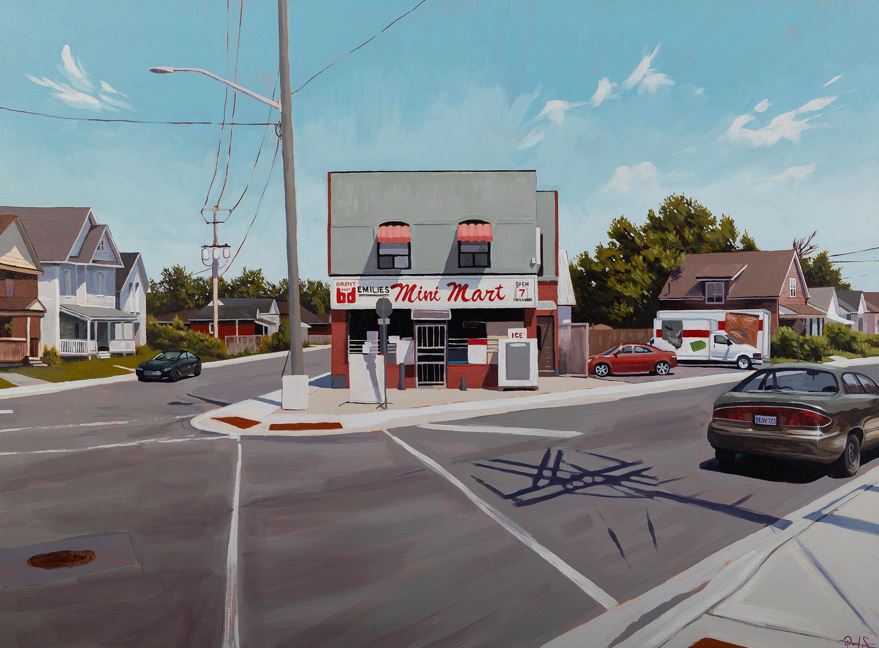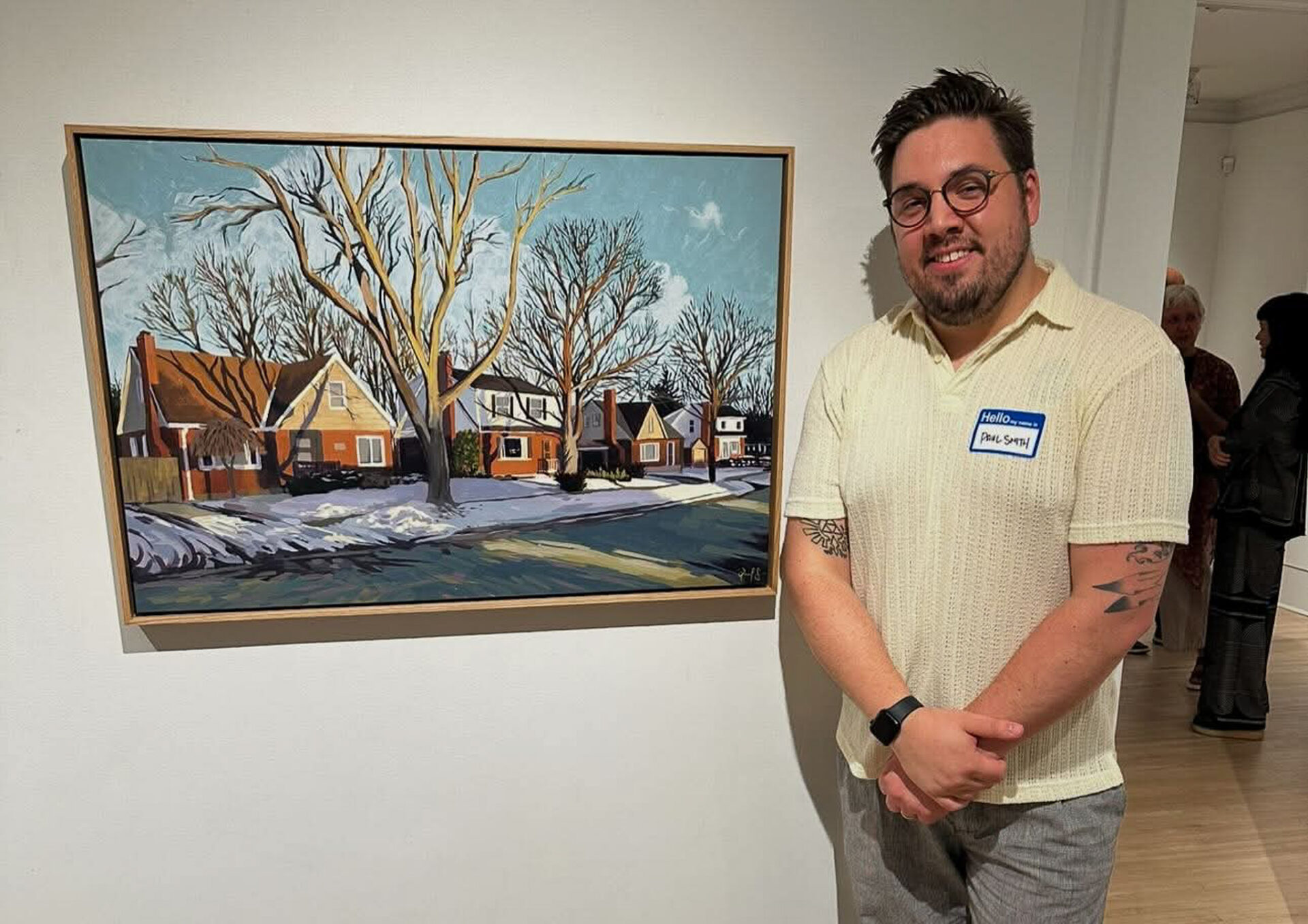After years of recognition for his photography, Paul Smith has embraced painting, discovering an equally rewarding outlet for his creativity.
Smith, who is a Brantford native, described his early exposure to photography and both the commercial and creative aspects of it.
“I was really fortunate that I knew I wanted to be a photographer at a really young age. My grandfather was a photographer [and] he gave me a camera when I was 12. And through high school and college I loved doing art, especially visual art. I would go on to Sheridan College for photography, which is just a two-year diploma program. It wasn’t very long, but it was a really intense course,” the artist explained. “During that time, I learned that while art is deeply personal and creative, it is also a business and a vocation. You have to look at it not just in terms of what you love to do, but how you sustain yourself and survive. To make it work, you have to treat it like a business and think of your work as a commodity. That’s tough, because some people don’t want to mix the two.”
After graduating from college, he would live and work in Toronto for a while, eventually coming back to Brantford.
“My husband, Steve, and I had a lovely time in Toronto. I learned a lot there. But we decided to move to Brantford in 2010…[because] we saw a lot of people doing creative, interesting things here in the city and I wanted to be one of them—I wanted to make my mark,” he said. “Since then, I’ve worked as a freelance photographer. I’ve done lots of interesting creative projects and aligned myself with non-profits, organizations, and many other people in the community who were making things happen.”

Smith would go on to build a strong portfolio while forging many relationships in the community.
“Working with Lucas Duguid of Octopus Red was a truly beneficial and rewarding experience. At the time, he, along with a couple of others including Marc Laferriere, were involved with The Advocate, a monthly newspaper. This was one of my favourite projects because the work we did for it really fulfilled that creative itch,” said the artist. “To me, art in general is best and most fulfilling when it intersects with some other thing, whether it’s history, anthropology—something about people—or some other idea. Editorial photography and that sort of thing, where you’re going out and photographing something in the community, you’re doing something artistic, [while] having a relevance to a place, was really rewarding.”
However, Smith did a lot of corporate work and found the rewarding aspects of photography work.
“I did a lot of photography, I met a lot of people, and I made a lot of really amazing connections through various projects over the years. That, again, got me known, which was great. [A lot of] my work is corporate, like doing headshots. And other times, I was doing things like wedding photography or portrait photography, which is very personal. People see the images and they love them, and you can tell that they feel connected to the photograph that you made for them,’ he explained. “You’ve shown them a part of themselves that they really love, and that magic in photography is beautiful. It’s just that it’s sometimes very personal to one person. No one really cares about someone else’s wedding photography, generally, like someone they don’t know. So, I tend to find that all my favourite work is for the individual.”
Another important creative project that Smith was a part of was an online publication called BTown.
“It was with Chris George and Amanda Mersereau who own Zed Brantford records, and…they had this little idea of just having a sort of this community publication highlighting interesting and creative people and those unsung heroes in the community,” he shared “.…I absolutely loved doing that. I had a lot of creative freedom to do whatever I wanted… which isn’t always the case, especially [related to] commercial and corporate work.
After many years of doing photography, Smith would turn his attention to painting and taking it seriously.
“The early period during and after the peak of COVID-19 was a time of real change. With everything shut down, a lot of people started asking, ‘What is my purpose?’ Like many others, I read a lot of books and learned how to bake. I started to paint a bit more too… I have always painted throughout my entire life, but never seriously—not with any sort of structure, purpose, or direction,” he said. “I would often paint just casually, to get my hands working, and to simply do something. After the pandemic ended…I became very busy…because so much commercial and corporate work had been put on hold for a couple of years, and it all suddenly picked up all at once. It got to a point around mid-2023 where I was waking up feeling disconnected. I absolutely love photography, but when you are constantly doing commercial and corporate work, it can become creatively dry…and [as a result] …I felt disconnected from my passion… I wanted to make something that was for a purpose bigger than just the single client I was working for at the moment. I then made a firm decision [that I was going to] teach myself how to paint for real.”

Smith would soon realize the importance of pursuing painting, especially in helping create a richer artistic path in his life.
“After finishing my first piece—a small motel sign pencil sketch that read ‘No Vacancy’—I sat there and cried [as] I realized I had been denying this essential part of myself for a very long time,” shared the artist. “I knew right then this was a path I couldn’t push away. Making art, as I’ve confirmed with other artists, is a genuine compulsion. It makes me feel connected to the world in a way nothing else can.”
In 2024, Smith would get a unique opportunity to further explore painting through an artistic program.
“The incubator [offered at Glenhyrst Art Gallery of Brant] completely changed my life. It forced me to think about who I was as an artist in a totally new way. I was part of the eight-month residency, running from October until May,” he said. “Although there was a cost per month, the rent was very reasonable, essentially giving me a dedicated space to work anytime. [Crucially], it provided an opportunity for professional development, allowing me to talk with working artists and learn to sell work, get into galleries, and develop my professional skills.”
During these eight months, he would grow as an artist, spending time with the other artists in the program as well as reflecting on his own process.
“The residency experience with three other artists [in their own spaces] at the cottage at Glenhyrst—was a valuable collaborative atmosphere. There’s a well-known idea that artists often work in silos, making it difficult to get objective feedback or a different perspective on your own art. Having fellow creators nearby provided constant opportunities to ask: ‘Is this the strongest version of the idea?’ We even established a routine of debriefing and decompressing each morning. This feedback was incredibly important, especially for my painting,” said Smith. “Unlike my photography, I found that painting is a deeply vulnerable act where I embed a part of myself into each work. Having someone like Kim Clark, another artist who was part of the incubator, in the room to affirm ‘You’re on the right track’ or suggest an alternative view was absolutely instrumental [in my development]. Beyond the collaboration, the beautiful grounds of the residency contributed significantly to my process. Also, being there from October to May meant I witnessed the full cycle of seasons, a constant reminder of the passage of time. This setting allowed me to focus on looking, observing, and being present—which is central to my artistic process.”

However, Smith would delve into the key inspirations behind his works, especially with a specific landmark that was prevalent across highways and roads in the past.
“My husband is from Timmins, and I’ve noticed that things move very slowly in Northern Ontario [which] really heightened my awareness of the identity of place: how does the architecture, how does our human presence, change how a location feels? Brantford has that same quality—specific spots that carry a powerful sense of identity. When I started painting, I was immediately drawn to old motel signs. I love their architecture and their sculptural quality, but more importantly, they act as fascinating place markers that inform local identity. I can’t tell you how many times I’ve shown a painting of the Queen View Motel sign, the one on Highway 3, and someone says, ‘I know exactly where that is! When I see that sign, I know I’m X minutes from my house.’ It shows these small things really inform our relationship to the landscape,” he reflected. “The other crucial factor is that these signs are disappearing. We often don’t notice them until they’re gone, and then a little piece of history is erased. That’s why I see my paintings not only as art but as a form of documentation. That initial idea of place-identity has grown beyond motel signs. Now it includes neighbourhoods and landmarks—from the statues of St. George to the local mini-mart—places where people hold strong, specific nostalgic memories. My work is about honouring that feeling and preserving it before it potentially goes away.”
Although Smith has continued to successfully develop his unique voice through painting, he has wrestled with regret.
“At 38, I was struggling with a sense of regret…with a feeling that I should have started this artistic journey years earlier. Matt Smith, who is the curator at Glenhyrst and who I worked with during my residency, offered a vital perspective. He urged me not to focus on regret [and] reminding me that 16 years of photography, [gave me a] deep understanding of composition and light that [which] allowed me to paint with such clarity. I realized he had a really good point [as] without that extensive experience; I might not have the clear vision I possess today,” said Smith. “This validation cemented my decision to pursue art at 100 per cent. I realized I couldn’t be wishy-washy; I had to take my identity as an artist seriously. But this commitment required action, which meant attending every show and event possible. Like the residency, this immersion [across many aspects of painting] has been invaluable. It’s a fantastic way to showcase my work, meet other artists, and hear what drives them.”
However, with the recent success, the artist has had to manage his expectations, by focusing on his work while setting goals for himself.
“Experiencing early success in a juried show—[and] specifically, winning second place at the Glenhyrst Biennial Juried Exhibition—was thrilling, but it immediately created an unexpected challenge for me: tempering my ambition. Achieving such a huge milestone so soon in my career put intense pressure on me to accelerate my progress. I quickly recognized that I risked potential burn-out if I pushed too hard, so I’ve had to be careful not to overextend myself,” explained the artist.. “As for my key long-term goals, I’m aiming to secure a solo exhibition [as well as] finding gallery representation. While a solo show is a massive career milestone, it demands patience on the part of the artist. The timeline, especially with public galleries like Glenhyrst or Homer Watson [House and Gallery], can be extensive—sometimes involving a three-year wait between the initial proposal and seeing the final exhibition [being] realized.”
